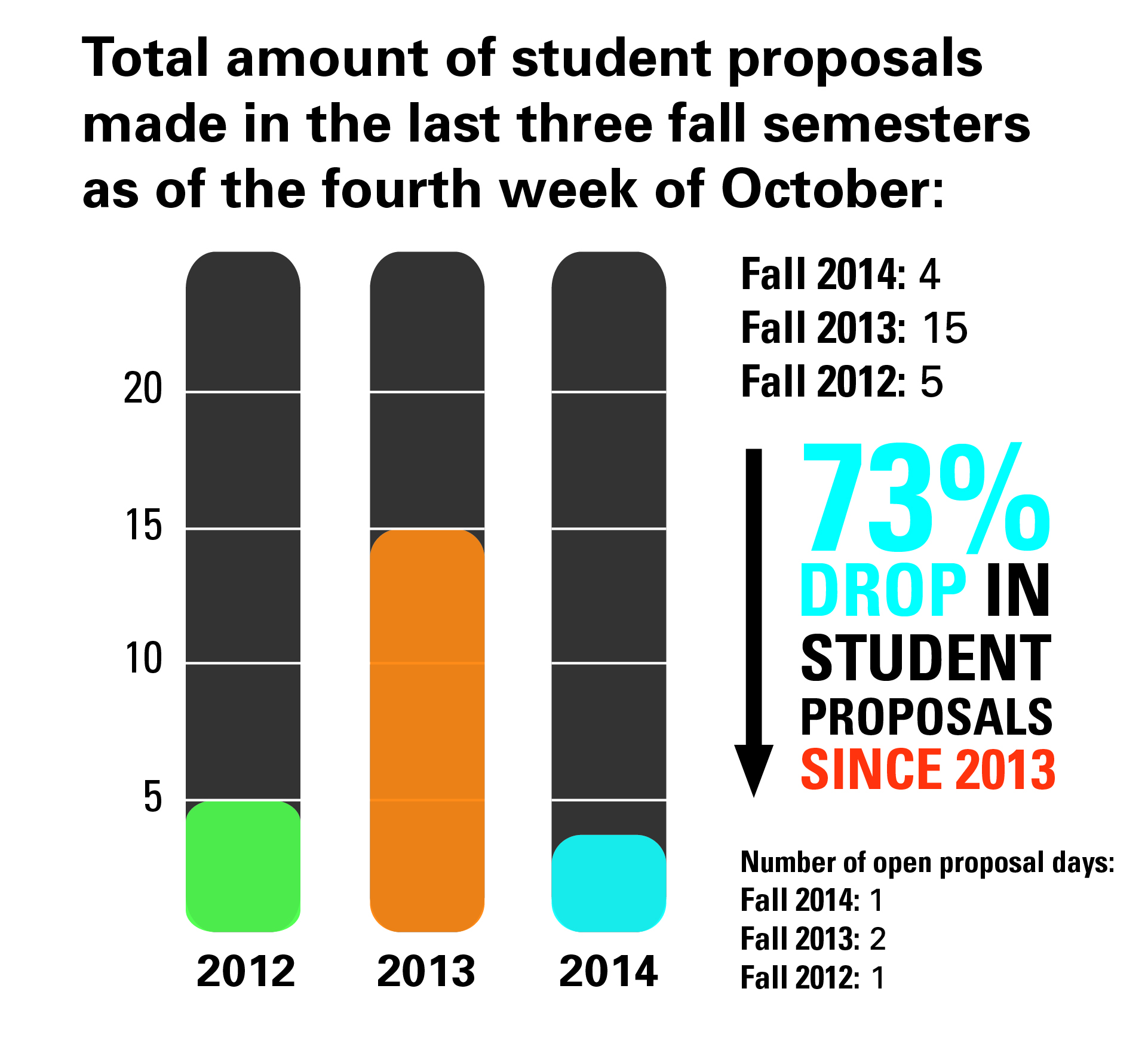
There has been a significant drop in student initiative proposals to Associated Students this semester with internal proposals — proposals from AS members — making up the majority.
Out of the 10 proposals this semester, only four have been from students not involved in AS, compared to the ten student proposals at the same time last year.
REASONS FOR THE DECREASE
This drop may be simply due to the fact that the school year remains in its early stages and students have yet to become aware of this opportunity, said Ashley Panko, AS senior vice president.
“I think in some ways people just don’t know about it and sometimes they just don’t have anything urgent that they feel is important,” said Christina Toy, junior intercultural studies major.
As the school year progresses, a larger amount of students will likely hear about student proposals and take advantage of the opportunity, said Matthew Porter, AS vice president of finance, technology and HR.
“I think word’s getting out more. The further we get into the semester, the more proposals we’ll start to see,” said Porter.
Open proposals, whether external or internal to AS, provide a voice to students and allow for a greater freedom for ideas to improve on-campus activities and organizations.
“AS survives off of the students so we feel this is a really great way for students to have a very powerful voice in where that money goes,” Porter said.
Students also recognize the benefits of having open proposals available to them.
“It’s a very cool thing and it gives everybody a voice so it’s a nice feature and it makes AS more inclusive,” said Austin Bowden, junior human biology major.
Ultimately, AS welcomes all proposals and encourages the initiative of proposing to the senate.
“We have tried to streamline the process to come and propose to the senate. It’s a super easy thing and we have this account for the students so I would just implore them to really isolate what they want and come in and propose for it,” Porter said.
Students who want to apply for a proposal can fill out and submit the application online on the AS website.
LOGISTICS BEHIND OPEN PROPOSALS
Each semester, the AS budget generally designates 15 to 18 percent of funds within AS specifically for student proposals and have funded 90 percent of the total proposals made so far, said Porter.
The amount of money given to each accepted proposal varies on a case by case basis. The student proposes for an amount and AS decides to fund in full, partial or none, said Panko.
The senate votes on proposal day to pass or deny the proposal depending on how well it fits the mission of AS, Porter said. This mission is to provide the resources for student leaders who want to implement events and programs that will ultimately foster a Christ-centered community, according to the AS website. The voting will always take place on a Thursday and students can go to their senator to learn of the proposal voting date in order to be aware of the deadline for the application. As of late October 2013, there were two open proposal days in comparison to this year’s one open proposal day.
If the student proposal contingency fund has money left over by the end of the semester, the funds roll over to the next semester. If AS does not hold a specific idea of what to do with the surplus amount, they look into what would benefit the university and turn to the president and the administrative council for suggestions, said Porter.







